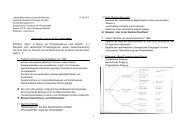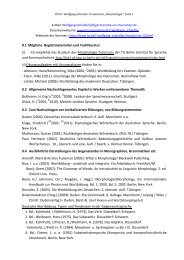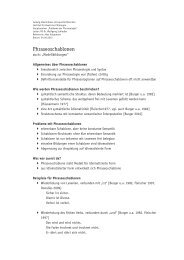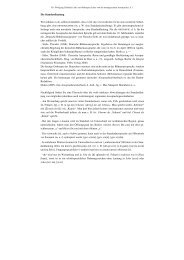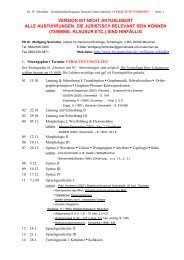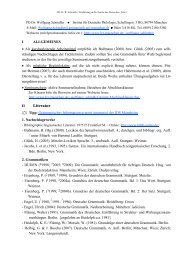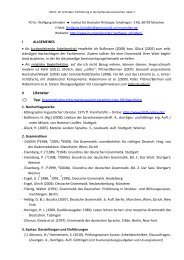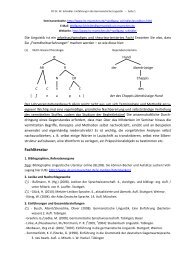Chapter 18 Lexical Functions: Description of Lexical Relations in a ...
Chapter 18 Lexical Functions: Description of Lexical Relations in a ...
Chapter 18 Lexical Functions: Description of Lexical Relations in a ...
Create successful ePaper yourself
Turn your PDF publications into a flip-book with our unique Google optimized e-Paper software.
—<strong>Chapter</strong> <strong>18</strong>. <strong>Lexical</strong> <strong>Functions</strong>— 88<br />
assurance maladie lit. (illness <strong>in</strong>surance) = (medical <strong>in</strong>surance) and assurance vie (life <strong>in</strong>surance)<br />
are collocations: <strong>in</strong> the first case you <strong>in</strong>sure aga<strong>in</strong>st illness, <strong>in</strong> the second case you <strong>in</strong>sure your<br />
life. (Other cases <strong>of</strong> the same type are assurance <strong>in</strong>cendie lit. (fire <strong>in</strong>surance) vs. assurance<br />
logement lit. (apartment <strong>in</strong>surance).) Or else Fr. auto-école vs. driv<strong>in</strong>g school; or Fr. [un]<br />
condamné à vie lit. (condemned to life) = (person condemned to life <strong>in</strong> prison) vs. [un] condamné à<br />
mort lit. (condemned to death); cf. life sentence vs. death sentence. In all these collocations the<br />
problem is created by a semantic actant expressed idiosyncratically (it is shown <strong>in</strong> boldface). The<br />
technique used <strong>in</strong> MTT to describe such phenomena is to use the Government Pattern, <strong>in</strong> which<br />
all such idiosyncrasies are explicitly stated. Thus, the collocations <strong>of</strong> this type are covered by<br />
GPs rather than by LFs. (See <strong>Chapter</strong> 17, 5, p. 00ff.)<br />
6.3 <strong>Lexical</strong> <strong>Functions</strong> <strong>in</strong> L<strong>in</strong>guistic Representations<br />
As far as the participation <strong>of</strong> LFs <strong>in</strong> l<strong>in</strong>guistic representations is concerned, the standard and the<br />
non-standard LFs are treated differently.<br />
The standard LFs are considered to be Deep <strong>Lexical</strong> Units; therefore, they appear <strong>in</strong> the<br />
DSynt-Structure <strong>of</strong> the sentence under process<strong>in</strong>g. Thus, dur<strong>in</strong>g synthesis, the standard LF f is<br />
selected based on its semantic source <strong>in</strong> the <strong>in</strong>itial SemS. For <strong>in</strong>stance, for the expression high<br />
temperature <strong>of</strong> the liquid we have the correspondence (16):<br />
(16) (temperature )<br />
(liquid)<br />
1 2<br />
1<br />
(!)<br />
(very)<br />
TEMPERATURE<br />
"<br />
I<br />
LIQUID<br />
SemS DSyntS<br />
ATTR<br />
Magn<br />
The LF Magn is computed accord<strong>in</strong>g to LF-Sem-Rule 2, see above, 5.1.5. (The adjective HIGH is<br />
computed later—at the SSynt-level as an element <strong>of</strong> the value Magn(temperature); it is taken from<br />
the lexical entry <strong>of</strong> TEMPERATURE and <strong>in</strong>serted <strong>in</strong>to the SSyntS <strong>of</strong> the sentence.)<br />
The non-standard LFs are not Deep <strong>Lexical</strong> Units and they do not appear <strong>in</strong> any<br />
representation. They are simply used <strong>in</strong> the lexicon to ensure the correct lexical choice <strong>in</strong> the<br />
process <strong>of</strong> synthesis. For <strong>in</strong>stance, for the expression leap year we have the correspondence (17):


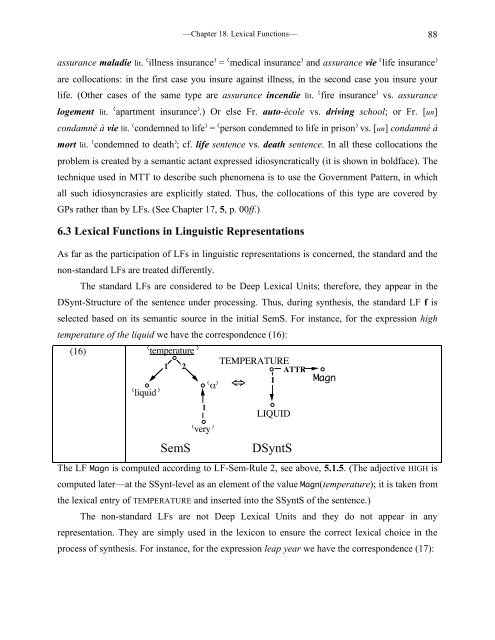
![E-Mail: Wolfgang.Schindler[ätt]germanistik.uni-muenchen.de Web ...](https://img.yumpu.com/51590147/1/184x260/e-mail-wolfgangschindlerattgermanistikuni-muenchende-web-.jpg?quality=85)
